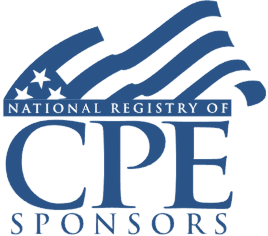- videocam On-Demand Webinar
- signal_cellular_alt Intermediate
- card_travel Tax Preparer
- schedule 110 minutes
Built-in-Gains Provisions in C-to-S Corp Conversions: Avoiding Double Taxation Through BIG Planning
Pre-Conversion Valuations and Calculations, Identifying Losses to Offset BIG, Using C Corp Attributes to Minimize Tax
Welcome! Save 30% on all CLE, CPE, and Professional Skills webinars, plus 15% off any annual pass with code HOLIDAY25
About the Course
Introduction
This course will provide tax advisers with a comprehensive guide to the pre-conversion planning opportunities available to minimize or avoid built-in gains (BIG) tax in converting existing C corporations to S corps. The panel will discuss the identification and valuation of assets subject to BIG tax and discuss strategies to offset BIG through planning steps before the S corp conversion.
Description
Converting from C corporation to S corporation status can benefit many companies from tax and operation standpoints. C corporation owners can convert their company to an S corporation without triggering an immediately taxable transaction in most cases. However, several potential tax traps can arise in a conversion if not properly planned. One of the most frequent and costly tax implications of a C-to-S conversion is the BIG tax.
Taxable BIG occurs when an S corporation sells or distributes certain specified assets within five years after its conversion date from C corporation status, or when a converted S corporation acquires assets with a carry-over basis from a predecessor C corporation. Because the BIG tax is imposed at the top tax rate for corporations, tax advisers should look closely at asset planning before completing the S corporation conversion.
In planning for and reporting a C-to-S conversion, tax advisers must account for net unrecognized BIG as well as built-in losses. IRC Section 1374 provides for a netting mechanism to potentially lessen the impact of the BIG tax. Additionally, planners can utilize carryforward C corp attributes to minimize BIG tax.
Listen as our experienced panel provides comprehensive guidance on the calculations, risks, and planning opportunities involved in minimizing or eliminating the BIG tax in a C-to-S corp conversion.
Presented By

Mr. Barrie graduated from UCLA with a BA in Political Science, from University of California – Hastings College of Law, with a JD, and New York University, with a Master of Laws in Taxation. He is admitted to practice in New York, California, District of Columbia and Missouri. After serving as an Attorney-Advisor to Judge Leo H. Irwin, United States Tax Court and engaging as a partner in an international law firm for over 25 years, he joined McLaughlin & Stern as a partner and chair of the Tax Practice Group, in 2022. His practice involves all phases of both a federal and SALT tax controversy tax practice as well as an extensive domestic and cross-border tax transactional practice.

Mr. Dyer manages and reviews all aspects of federal and state tax compliance for C-corporation, S corporation and partnership returns, including consolidated C-corporation returns. He advises businesses on a wide array of tax matters including but not limited to reorganizations and employee benefits. He manages and reviews all aspects of the preparation of high net worth individual returns and conducts tax research on federal and state tax issues. He also handles tax controversies, including at the examination, appeals and collections stages.
-
BARBRI is a NASBA CPE sponsor and this 110-minute webinar is accredited for 2.0 CPE credits.
-
BARBRI is an IRS-approved continuing education provider offering certified courses for Enrolled Agents (EA) and Tax Return Preparers (RTRP).
Date + Time
- event
Wednesday, July 17, 2024
- schedule
1:00 p.m. ET./10:00 a.m. PT
- Identifying assets subject to BIG tax in the conversion planning process
- Valuation requirements and options
- Projecting BIG tax impact post-conversion
- Transactions during the recognition period
- Using C corp attributes to offset BIG tax
- Pre-conversion strategies for minimizing BIG tax
The panel will discuss these and other important questions:
- How to identify assets subject to BIG tax
- Appraisal and valuation requirements and adjustments for all assets, whether on the balance sheet or not
- How to estimate BIG tax liability
- What strategies are available to utilize C corporation attributes to offset BIG tax?
- What strategies can advisers employ to minimize the BIG tax impact on assets pre-conversion?
- Handling LIFO inventory matters on the conversion
Learning Objectives
After completing this course, you will be able to:
- Identify assets subject to BIG tax
- Ascertain strategies to minimize or avoid built-in gains
- Determine net unrealized built-in gains before conversion
- Decide which events trigger BIG recognition
- Field of Study: Taxes
- Level of Knowledge: Intermediate
- Advance Preparation: None
- Teaching Method: Seminar/Lecture
- Delivery Method: Group-Internet (via computer)
- Attendance Monitoring Method: Attendance is monitored electronically via a participant's PIN and through a series of attendance verification prompts displayed throughout the program
- Prerequisite: Three years+ business or public firm experience preparing complex tax forms and schedules, supervising other preparers or accountants. Specific knowledge and understanding of pass-through taxation, including taxation of partnerships, S corporations and their respective partners and shareholders.

BARBRI, Inc. is registered with the National Association of State Boards of Accountancy (NASBA) as a sponsor of continuing professional education on the National Registry of CPE Sponsors. State boards of Accountancy have final authority on the acceptance of individual courses for CPE Credits. Complaints regarding registered sponsons may be submitted to NASBA through its website: www.nasbaregistry.org.

BARBRI is an IRS-approved continuing education provider offering certified courses for Enrolled Agents (EA) and Tax Return Preparers (RTRP).

BARBRI CE webinars-powered by Barbri-are backed by our 100% unconditional money-back guarantee: If you are not satisfied with any of our products, simply let us know and get a full refund. Contact us at 1-800-926-7926 .
Unlimited access to premium CLE courses:
- Annual access
- Available live and on-demand
- Best for attorneys and legal professionals
Unlimited access to premium CPE courses.:
- Annual access
- Available live and on-demand
- Best for CPAs and tax professionals
Unlimited access to premium CLE, CPE, Professional Skills and Practice-Ready courses.:
- Annual access
- Available live and on-demand
- Best for legal, accounting, and tax professionals
Unlimited access to Professional Skills and Practice-Ready courses:
- Annual access
- Available on-demand
- Best for new attorneys
Related Courses

Partnership Terminations: Sale or Abandonment of an Interest, Retirement or Death of Partner, and Closing the Entity
Wednesday, February 18, 2026
1:00 p.m. ET./10:00 a.m. PT

UK-Based Retirement Accounts for U.S. Taxpayers: Mastering Reporting, Maximizing Planning Opportunities
Tuesday, January 27, 2026
1:00 p.m. ET./10:00 a.m. PT

Tax Research Techniques: Internet Tools, AI Caveats, Methodology, Documentation and Communication of Results
Wednesday, January 21, 2026
1:00 p.m. ET./10:00 a.m. PT

The Impact of OBBBA on Trusts and Estates: New Planning Opportunities
Monday, January 26, 2026
1:00 p.m. ET./10:00 a.m. PT
Recommended Resources

How CPE Can Bridge the Gap Between What You Know and What You Need to Know
- Career Advancement


